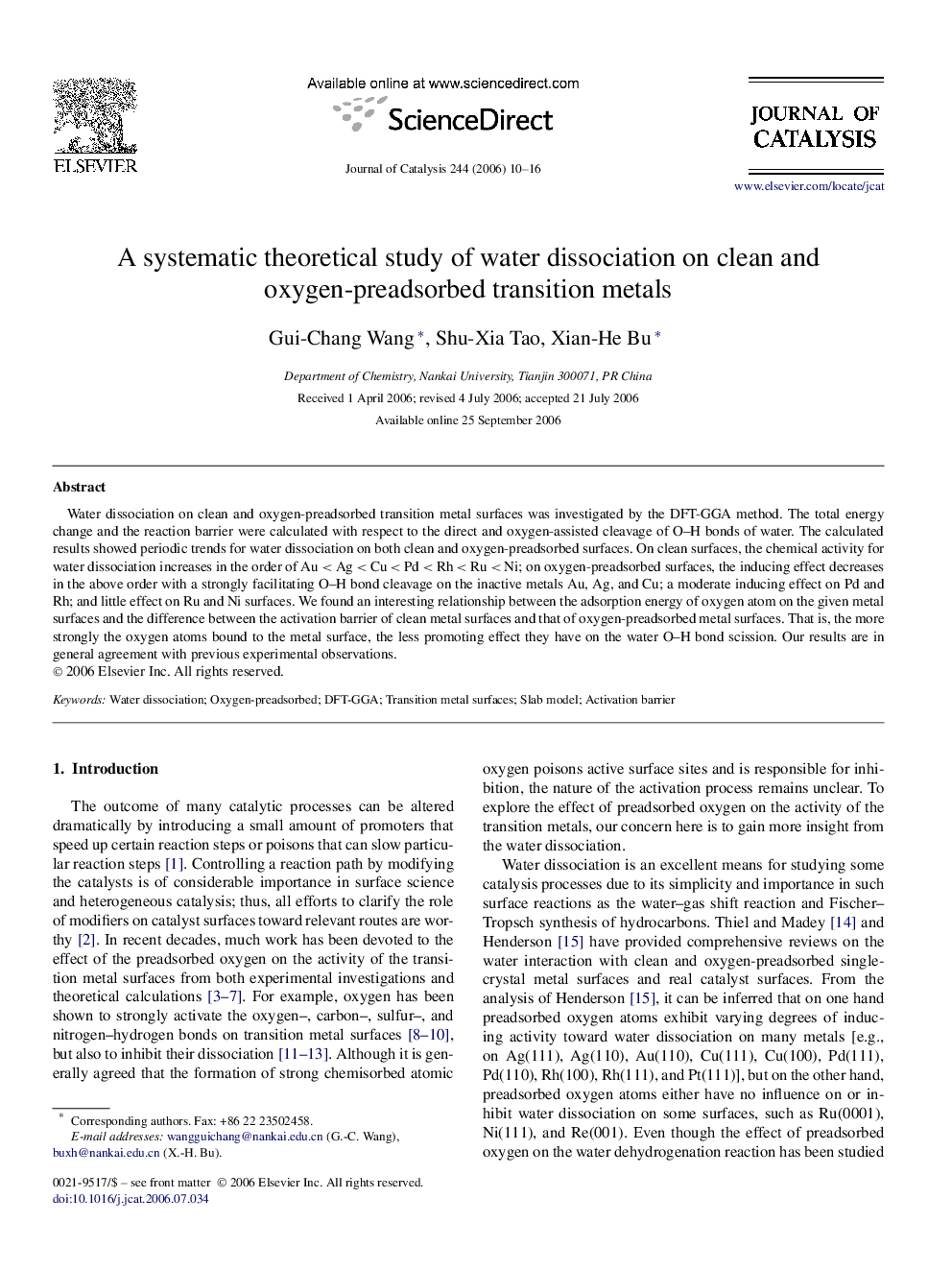| Article ID | Journal | Published Year | Pages | File Type |
|---|---|---|---|---|
| 62985 | Journal of Catalysis | 2006 | 7 Pages |
Water dissociation on clean and oxygen-preadsorbed transition metal surfaces was investigated by the DFT-GGA method. The total energy change and the reaction barrier were calculated with respect to the direct and oxygen-assisted cleavage of OH bonds of water. The calculated results showed periodic trends for water dissociation on both clean and oxygen-preadsorbed surfaces. On clean surfaces, the chemical activity for water dissociation increases in the order of Au < Ag < Cu < Pd < Rh < Ru < Ni; on oxygen-preadsorbed surfaces, the inducing effect decreases in the above order with a strongly facilitating OH bond cleavage on the inactive metals Au, Ag, and Cu; a moderate inducing effect on Pd and Rh; and little effect on Ru and Ni surfaces. We found an interesting relationship between the adsorption energy of oxygen atom on the given metal surfaces and the difference between the activation barrier of clean metal surfaces and that of oxygen-preadsorbed metal surfaces. That is, the more strongly the oxygen atoms bound to the metal surface, the less promoting effect they have on the water O–H bond scission. Our results are in general agreement with previous experimental observations.
